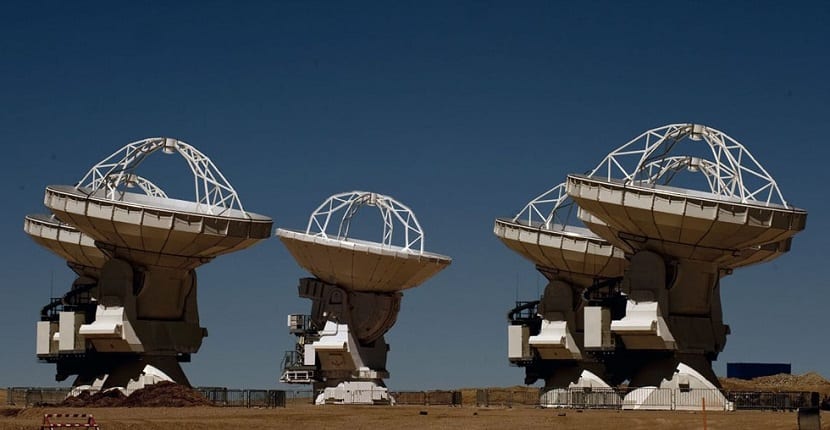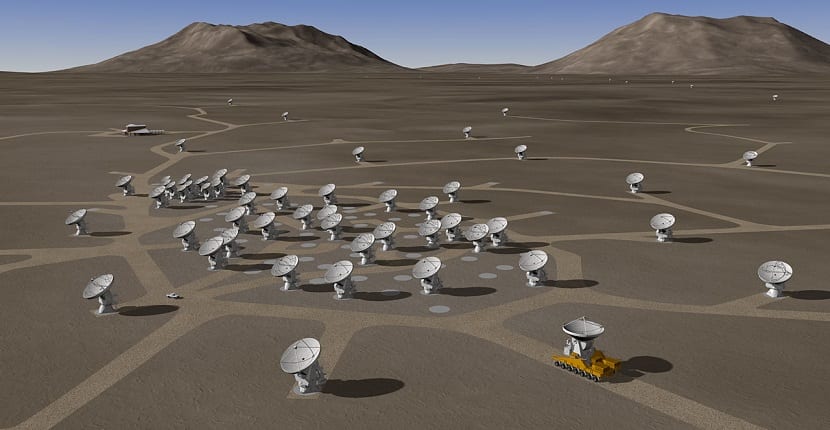
Astronomy has always been characterized as a field where nothing can be considered valid, there have been many theories that at the time seemed irrefutable until a group of researchers managed to discover the existence of a phenomenon that until then we had never been able to contemplate and that precisely serves to destroy that particular theory. This tends to be something that occurs more and more frequently thanks to the use of sophisticated systems such as the ALMA telescope, which is allowing us to advance to new levels of knowledge.
Due to this and although it seems more than likely that we know how planets are created, the truth is that we know much less than we think and it is best to keep looking in outer space for some kind of image that helps us contemplate how this happens. kind of landmark in space. Finally and after all this waiting time we have managed to find a specific moment where it seems that three planets are beginning to form.

A group of researchers discovers three planets that are beginning to form
To achieve this, a group of astronomers has needed the help of the so-called telescope ALMA, a complex equipped with no less than sixty-six high precision antennas located in the Chajnantor plain (Chile) at no less than 5.000 meters above sea level. The joint work of all this quantity of antennas means that the system can work as if it were a giant telescope, not in vain we are talking about a project that, for its development and start-up, has required nothing less than a investment of more than 1.000 million euros.
The truth is that talking about such an amount of money invested in the construction of a telescope with the characteristics of ALMA can scare more than one. On the other hand, thanks precisely to this project it has been possible to carry out numerous scientific advances such as the one that brings us together today in this post, nothing less than the discovery of three newly formed planets that orbit the star HD 163296, a star that is literally twice as massive as our Sun but whose age is one thousandth of that of our star, since, according to the studies carried out, it is only four million years old.
As we can read in the paper that has been published in the magazine Astrophysical Journal Letters By this team of independent researchers, apparently we are talking about a new system located in the constellation of Sagittarius, about 330 light years from Earth, an impressive distance that has not been an impediment for this group of researchers led by Richard D. Teague, may have made this impressive discovery.

Changing the way an observation data is processed has led this group of researchers to discover three newly formed planets
To know a little more in detail how a discovery like this takes place, tell you that the group of researchers decided to proceed in a different way in the study of the data offered by ALMA on this system since, instead of observing the interior of it , as had been done on some other occasion, they decided to study the gas of the star's disk. In this way they realized that the movement of the gas inside the star, which normally follows a very simple and predictable pattern, was very disturbed, something that only occurs in the presence of massive objects.
This was precisely what led the researchers to analyze the carbon monoxide distributed by the disk. During this process they discovered the presence of a strange movement that seemed to correspond with the presence of three newly formed planets. According to the first estimates, it seems These planets would be 12.000, 21.000 and 39.000 million kilometers from the star and would have masses similar to those of Jupiter.
In the words of Chistophe Paint, from Monash University (Australia) and lead author of the study:
Measuring the flow of gas within a protoplanetary disk gives us much more certainty about the presence of planets around a young star. This technique offers a promising new way to understand how planetary systems form.
And for what? ? They have discovered IT ... If humanity is never going to get there ... You have to be an idiot to be wasting time in discovering something that is useless ... If they used the time to discover meteorites and annihilate them in time if possible ... They would do something useful in the lifetime ? ? ? ...